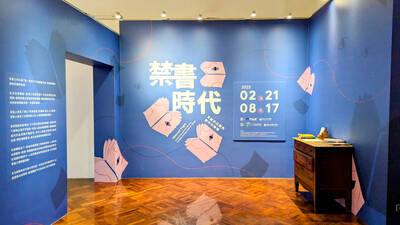An Australian artist has combined his love of the surf with that of the Middle East, producing surfboards adorned with Islamic art in a fusion he hopes will help broaden understanding.
Three years after ugly race riots between white and Lebanese Australians rocked Sydney’s Cronulla Beach, Phillip George has opened an exhibition of surfboards bearing Muslim motifs.
“It’s a way of getting an Australian iconic image like a surfboard and putting it together [with Islamic artwork] as a new Australian icon,” he said.
“They are, in a soft way, saying, ‘Well, everyone’s got a right to be here.’”
The Inshallah or “God willing” surfboards were partly inspired by the violence of Dec. 11, 2005 in which mobs of white Australians descended on Cronulla and attacked Lebanese-Australians to “reclaim the beach.”
The riots were the worst of modern times and sparked a series of retaliatory attacks in which churches, shops and cars were trashed.
George was surfing in the eastern Sydney beach of Maroubra on the day of the riots. And even he, despite his long love of the Middle East, received an unsolicited text message inviting him to go to Cronulla “and help bash a Mussie [Muslim],” he said.
He hopes his exhibition, in which all the surfboards face the Muslim holy city of Mecca, brings the “joy and wonderment of Islamic art” to a broader audience.
“The mainstream community may not go to an art gallery to look at Islamic art,” he said from Bondi Beach.
“But when you put it on a surfboard, they go, ‘Oh, wait a minute this is something different on a surfboard.’ You walk down the beach with a board like that and people stop.”
The surfboards, 30 of which form the new exhibition at Sydney’s Casula Powerhouse art center, are adorned with photographic images taken from mosques and other Islamic sites seen on his travels in the Middle East.
“It’s not pointing the finger at anybody, it’s not blaming anybody. It’s just saying, ‘Hey look this artwork coming out of Islamic culture.’
“So I’m saying have a look at the Ottoman artwork, have a look at the Persian artwork, have a look at the Arabic artwork — isn’t it beautiful.”
RESPECT FOR TRADITION
George, who is of Greek descent, is not a Muslim. But he said the work is done with “the utmost amount of respect” for the Islamic tradition and the surfboards, which are priced at US$6,580 each and will never be used in the surf.
“Some say you can’t have inshallah on a surfboard. The two surfboards which have inshallah on them will never go in the water because they are artworks,” he said.
“They are not going to have people put their feet on them.”
George is not the only artist who has been inspired by the events of late 2005. Roslyn Oades spent two years interviewing people from Cronulla and from Sydney’s Lebanese communities following the riots for her play Stories of Love and Hate.
Speaking to 65 people — from surfers, to Lebanese youth, police, and the media who covered the event — she has created a play that dissolves the stereotypes of “Lebanese thugs” versus “racist rednecks.”
In Cronulla, she found a community hurt and angry at its unwanted fame and loathe to be subjected to yet another of the re-education or peace projects that they endured in the aftermath of the violence.
“It was such a wounded community I found,” she said.
“They felt that they had been scapegoated as the racist capital of Australia whereas a lot of people jumped on the bandwagon at the time. There were people coming from all over New South Wales to be there that day.”
In researching the play, which uses word-for-word dialogue from her interviews, Oades also found that some Lebanese Australians were still hesitant to venture back to the Sutherland Shire’s Cronulla Beach.
“A lot people from outside of the Shire that are of Lebanese Australian origin don’t go there any more or are hesitant to go there,” she said.
But she said time has managed to soften some of the hurt.
“Maybe three years is a good time for people to reflect on the event and on where Australian culture sits now,” she said.

On the final approach to Lanshan Workstation (嵐山工作站), logging trains crossed one last gully over a dramatic double bridge, taking the left line to enter the locomotive shed or the right line to continue straight through, heading deeper into the Central Mountains. Today, hikers have to scramble down a steep slope into this gully and pass underneath the rails, still hanging eerily in the air even after the bridge’s supports collapsed long ago. It is the final — but not the most dangerous — challenge of a tough two-day hike in. Back when logging was still underway, it was a quick,

Chinese Nationalist Party (KMT) legislative caucus convener Fu Kun-chi (傅?萁) and some in the deep blue camp seem determined to ensure many of the recall campaigns against their lawmakers succeed. Widely known as the “King of Hualien,” Fu also appears to have become the king of the KMT. In theory, Legislative Speaker Han Kuo-yu (韓國瑜) outranks him, but Han is supposed to be even-handed in negotiations between party caucuses — the Democratic Progressive Party (DPP) says he is not — and Fu has been outright ignoring Han. Party Chairman Eric Chu (朱立倫) isn’t taking the lead on anything while Fu

There is a Chinese Communist Party (CCP) plot to put millions at the mercy of the CCP using just released AI technology. This isn’t being overly dramatic. The speed at which AI is improving is exponential as AI improves itself, and we are unprepared for this because we have never experienced anything like this before. For example, a few months ago music videos made on home computers began appearing with AI-generated people and scenes in them that were pretty impressive, but the people would sprout extra arms and fingers, food would inexplicably fly off plates into mouths and text on

From censoring “poisonous books” to banning “poisonous languages,” the Chinese Nationalist Party (KMT) tried hard to stamp out anything that might conflict with its agenda during its almost 40 years of martial law. To mark 228 Peace Memorial Day, which commemorates the anti-government uprising in 1947, which was violently suppressed, I visited two exhibitions detailing censorship in Taiwan: “Silenced Pages” (禁書時代) at the National 228 Memorial Museum and “Mandarin Monopoly?!” (請說國語) at the National Human Rights Museum. In both cases, the authorities framed their targets as “evils that would threaten social mores, national stability and their anti-communist cause, justifying their actions